
Redwood Sequoia sempervirens
Redwoods are the tallest living thing on Earth with the tallest living tree topping out at 379.1 feet. On the central coast we find many mature trees at 180 to 250 feet tall. Fossil ancestors of this ancient tree are found to have been widespread in the northern hemisphere over 100 million years ago. They currently range from the California-Oregon border in the north to Big Sur in the south, growing in a narrow band 5 to 30 miles wide along the coast. They are found from just above sea level up to over 3,000 feet. Redwoods often live from 600 to 1200 years while some have survived to 2200 years old. Redwoods grow in a unique relationship to coastal fog and have evolved in close relationship to fire.
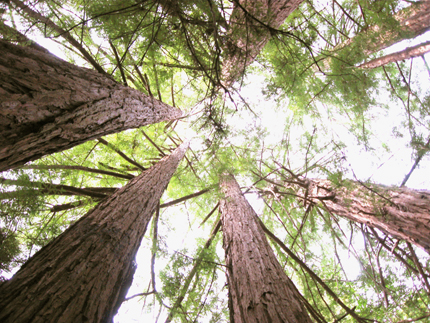
Clonal sprouts from a "parent" tree will often form rings around the location of the original parent tree.
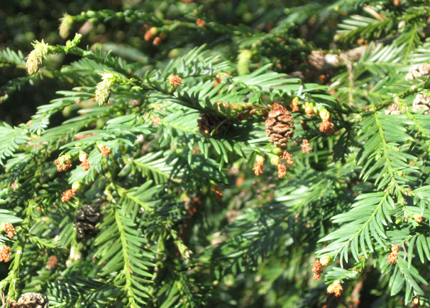
Foliage, female seed cones (both green and old), and male pollen cones.
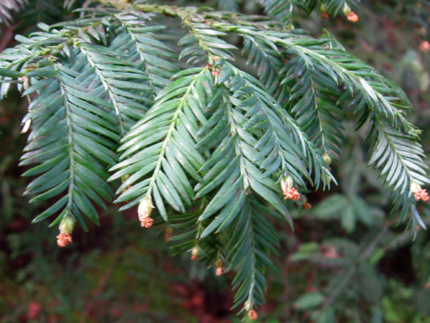
Needles on lower branches are 1 inch long, flat, and wide with white stripes underneath. Male pollen cones are at the tips of the branches. Notive the differences in the color of needles from different locations.
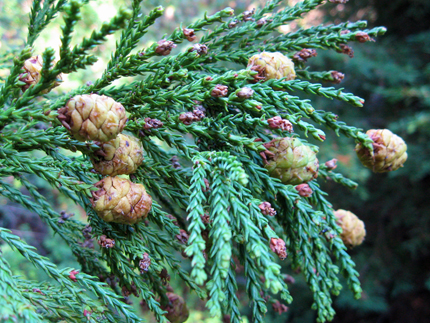
Foliage on upper branches of the tree are short and scale-like. Young green female seed cones take a year to mature.
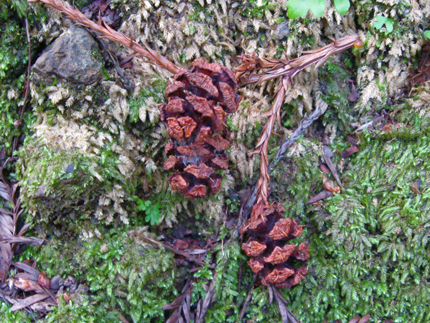
A single old-growth redwood can produce millions of pin-head-sized seeds annually; however, unlike any other North American conifer, they most commonly regenerate clonally by root sprout.
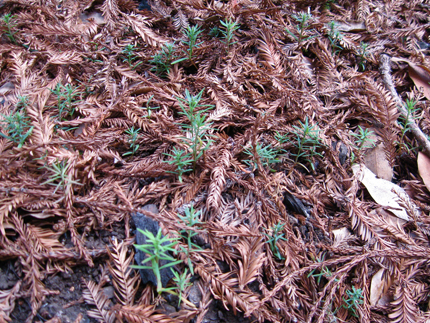
Redwood seedling sprouting after a recent fire. Even though millions of seeds are produce most never have a chance to sprout because of a thick mulch of needle sprays and fungus. After a fire when bare soil is exposed many seedling will sprout. However, very few will make it past their first dry season.
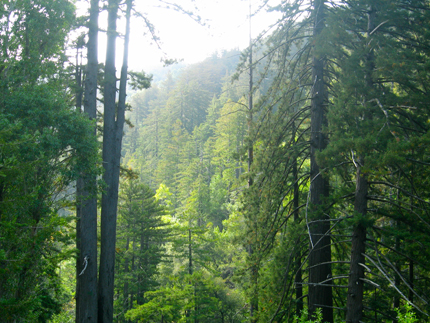
Surprising to many, redwoods have shallow roots 3-9 feet deep, but growing out from the tree for several hundred feet. Incredibly, mature redwood forests produce the greatest biomass per acre of any other forest in the world— almost 10 times that of mature tropical rain forest.
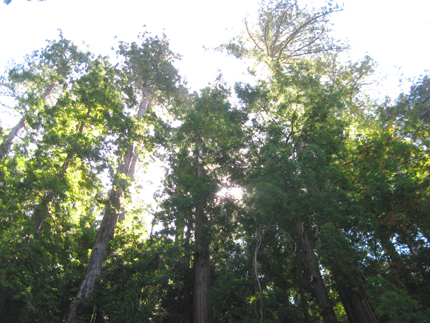
Redwoods southern limit is Big Sur. This photo is from the southern most grove in the Santa Lucia Mountains of Big Sur.
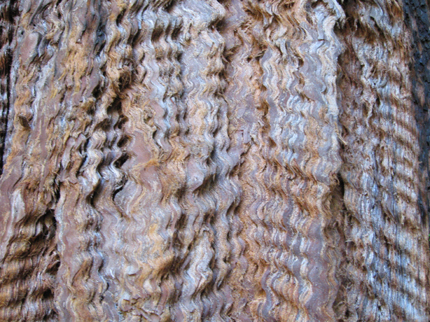
Ripplewood Redwood. The wood beneath this bark also splits along wavy lines.
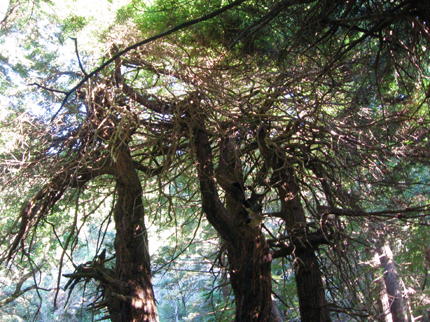
Redwoods gone wild. There is a degree of genetic diversity in Redwoods. Redwoods are famous for their straight tall growth that splits straight as a sawn board, however as shown in the this grove of trees they can show a degree of genetic "experimentation."
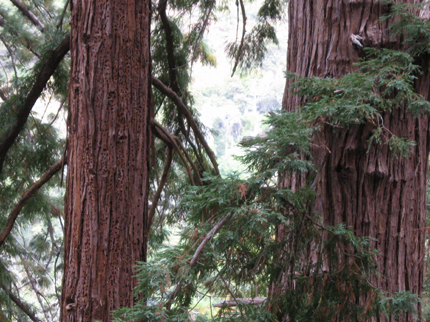
Acorn granary tree. A band of Acorn Woodpeckers are using the thick bark of the redwood tree on the left to store their cache of Tan Oak acorns.
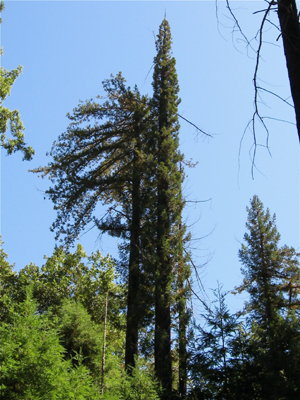
The above trees were burned black 8 years before this photo. The thick fiborous bark of the Redwood protects the cambiun layer of the tree. The tree to the left sprouted new shoots from its primary branches. The tallest tree in the middle lost its primary branches to the fire and still managed to send out shoots through the thick bark of the trunk. This type of sprouting is sometimes called a "bottle brush" sprout because of its unique shape.

New sprouts out of a recently burned tree trunk.
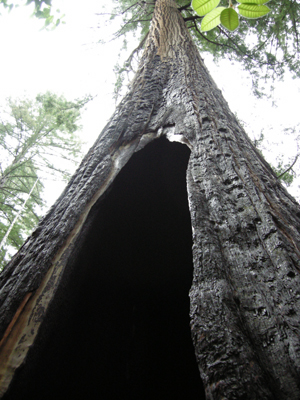
Sometimes fire will penetrate the fire resistant bark and burn the older dry heart wood. While the core of this tree is burned hollow enough to fit 25 people inside it is still very much alive as the cambium layer just beneath the bark is still intact on either side of the gaping hole.
Albino Redwoods:

Albino redwoods lack chlorophyll and thus the green pigment necessary for photosynthesis. These genetic mutations sprout from the roots of a normal tree and are dependent on the chlorophyll producing "host" tree.

The largest albino redwood I have witness was about 20 feet. More common are sprouts that are 15 feet or less. While not in this range there is a one albino redwood that measured 80 feet. The delicate ivory to creamy white foliage is a wonder to see. I know of at least 5 locations in the Santa Lucia Mountains, although I am sure there are more to be discovered. Most albino redwood sites are not made public in order to protect it from curious humans cutting branches to take home.

Here is a link to an article I wrote about redwoods for a local magazine:
Wild Big Sur: Redwoods